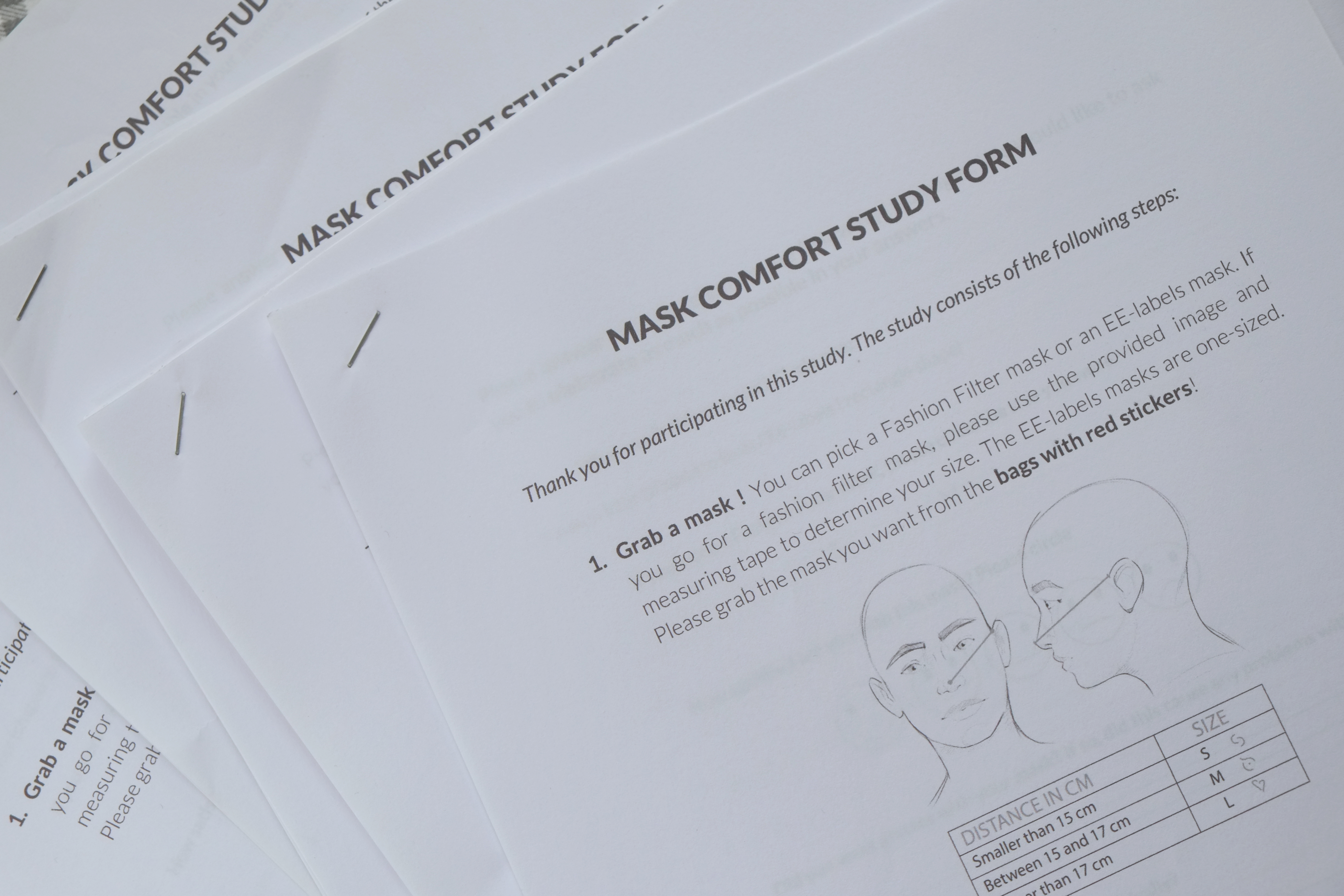Blog
The Comfort of Face Masks
Masks are often considered uncomfortable because of their restricting nature in both breathing and interaction. They can also bring forth other physical discomforts. The Fabric4Masks project considers understanding mask comfort to be an integral part of designing new and improved face masks which is why a comfort study was performed as part of the project.
The research consisted of an iterative set of user studies. Each study addressed a different side of the research question: How can we design for optimized comfort and use of face masks? Methods include qualitatively testing existing masks, performing online surveys, using diary studies and conducting interviews. The interview phase has the biggest contribution to the findings. 50 participants were interviewed on their mask use, preferences and their habits surrounding mask use.

Contributors to the comfort of face masks
From the research we can conclude that the elements contributing most to the comfort of face masks are: The fit around the ears, the level of fogginess of glasses, breathability and heat, the fit and the space between the face and the mask. Not everyone wears glasses, but the people that do almost always note that they are bothered by the fog on their glasses, making this a big problem. The space between the face and the mask is important because having a mask sucked to the mouth or even entering the mouth when talking or breathing heavily is considered very uncomfortable amongst most participants.
Attributes and features most favoured in face masks
The most commonly named desired changes are: the addition of a metal nose strip, the implementation of comfortable and adjustable elastics, an improved fit, a wider range of sizes and a friendlier look. Participants also note that they would like to see more clarity around mask habits. By understanding the elements contributing to a comfortable facemask and talking to participants about their habits and wishes we obtained deeper insights on what can be improved.
When we take a closer look, we see that many elements of improvement are very much related to each other. The level of fogginess of glasses for example is dependent on the fit of a mask, so a very well-fitting mask is favoured. A metal nose strip shows the need for a well-fitted mask for a variety of faces. It needs to be personally adjustable. The same goes for adjustable and comfortable elastics. Wearers want masks that do not hurt their ears and are adjustable to fit them neatly. An improved fit and the desire for a wider range of sizes available also show this need for a mask that fits everyone well. The breathability and heat are dependent on the type of material, while the space between the mouth and mask is dependent on both the shape and material of the mask.
Implications for future design
What we’ve learned is that participants simply want a mask that is tailored to their face. This desire is very understandable considering that face shapes and sizes can vary widely, however masks available on the market today do not. Ultra-personalization brings forth some issues such as manufacturability, sustainability and timeliness. The challenge is to create a single mask that is personalizable to many people. Built in elements should mould to the face well, no matter the size of the head. We could think of using stretch, folds and other elements to our advantage to create these masks. We could also imagine using a limited amount of sizing options and additional elements such as adjustable ear elastics to improve the fit even more but the mask itself should already be made to fit a lot of faces and to fit them well, even near the nose.
Understanding comfort is an integral factor when designing face masks.The design opportunities highlighted in this comfort research are implemented in the iterative design process that follows. The design process will focus on creating a well fitting mask that keeps its shape well, is easily manufacturable and fits a wide range of faces.
Author: Anne Lamers